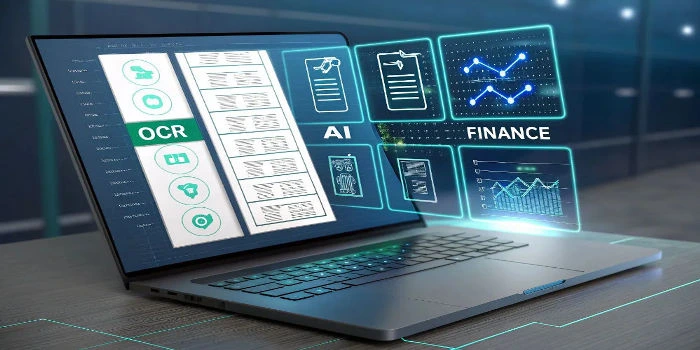20-22 Wenlock Road, LONDON, N1 7GU
20-22 Wenlock Road, LONDON, N1 7GU

Bank statement processing involves extracting critical financial data from documents. Traditional Optical Character Recognition (OCR) technology has limitations in handling image quality, complex layouts, and unstructured data. However, by combining AI and NLP for OCR, these challenges are overcome, improving the accuracy and efficiency of data extraction.
In this blog, we’ll explore how AI and NLP for OCR can enhance bank statement processing and help businesses streamline data extraction.
OCR technology works by converting images of text into machine-readable data. While effective in certain situations, OCR struggles in the context of bank statement processing due to several challenges:
To address these issues, integrating AI and NLP for OCR significantly enhances the performance of OCR technology. AI focuses on image optimization, while NLP ensures that the extracted data is interpreted and organized correctly. This helps businesses improve data accuracy and efficiency in processing financial documents.
When AI and NLP are integrated into the OCR process, the result is a more accurate and efficient bank statement processing system. Here’s how they work together to optimize OCR:
AI is essential for improving the quality of scanned bank statement images. Poor-quality images—blurry, misaligned, or noisy—can cause significant errors in OCR. AI-based algorithms enhance the image before OCR processing by:
This ensures that OCR can extract data from even low-quality scans, improving accuracy and reliability.
Once OCR extracts text from the image, NLP for OCR ensures the correct interpretation of the data. NLP analyzes the extracted text to understand its context, categorizing it appropriately. For example:
This ensures that extracted data is structured in a way that makes sense for financial analysis and reporting.
Machine learning (ML) algorithms continuously improve the performance of AI and NLP for OCR over time. As more documents are processed, the system learns to handle new document layouts, fonts, and handwriting styles, reducing errors and improving data extraction accuracy.
The integration of AI and NLP for OCR offers several benefits for businesses, particularly those handling large volumes of bank statements:
AI enhances image quality, and NLP provides contextual understanding, significantly improving OCR’s data accuracy. With fewer errors, the data extracted from bank statements is more reliable.
By automating image enhancement and data categorization, AI and NLP for OCR speed up the bank statement processing workflow. This reduces manual intervention and enables faster decision-making.
The automation of image optimization, text extraction, and data categorization reduces the need for human intervention. This decreases the likelihood of human errors and makes the process more efficient.
With NLP, OCR can better categorize complex financial data, such as transaction types, amounts, dates, and descriptions. This ensures that all extracted data is in the correct fields, ready for analysis.
AI and NLP algorithms can identify unusual patterns in bank statements, making it easier to detect fraudulent transactions. By ensuring accurate data extraction, these systems help prevent financial fraud.
The integration of AI and NLP for OCR optimizes the workflow, ensuring a more efficient and accurate process for extracting data from bank statements. Here’s the streamlined workflow:
By automating these processes, businesses can improve efficiency and reduce errors in data extraction.
While traditional OCR technology has its limitations, AI and NLP for OCR significantly improve accuracy, speed, and efficiency in bank statement processing. By combining AI’s image enhancement capabilities with NLP’s ability to interpret and categorize data, businesses can ensure that financial data is accurately extracted and organized. This integration helps companies streamline their data extraction processes, reduce errors, and improve decision-making.
Incorporating AI and NLP into OCR workflows helps streamline operations, reduce manual effort, and improve data quality—ultimately leading to a more efficient, cost-effective solution for processing bank statements.
AI enhances OCR by improving image quality, reducing noise, and aligning misaligned documents. This leads to more accurate data extraction, even from low-quality scans.
NLP helps interpret and categorize the extracted text from OCR, ensuring financial data like transaction amounts, dates, and account numbers are accurately structured for analysis.
Yes, AI enhances the readability of handwritten text, while NLP interprets and organizes the handwritten data, improving extraction accuracy.
AI and NLP improve processing speed, data accuracy, reduce manual work, and enhance fraud detection by identifying unusual patterns in transaction data.
Machine learning continuously refines OCR performance by learning from processed data, helping systems adapt to various document layouts and handwriting styles for greater accuracy.